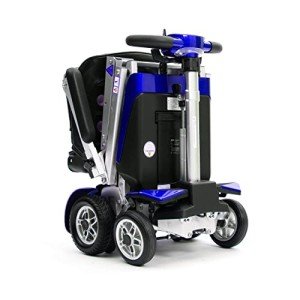A Comprehensive Guide to Buying a Mobility Scooter
Mobility scooters have become a crucial tool for numerous individuals looking to improve their self-reliance and mobility. With a huge variety of models and functions readily available, choosing the best mobility scooter can be daunting. This short article offers an informative guide to help consumers browse their choices, examine their requirements, and make a notified purchase.
Comprehending Mobility Scooters
Mobility scooters are electric cars created for people who experience mobility challenges. They are particularly advantageous for seniors, those with specials needs, or people recovering from injuries. Mobility scooters can differ extensively in terms of style, features, and prices.
Types of Mobility Scooters
Before starting a purchase, it's necessary to understand the various kinds of mobility scooters readily available:
Three-Wheel Scooters:
- Generally more maneuverable in tight spaces
- Lightweight and portable
- Suitable for indoor use
Four-Wheel Scooters:
- Offer higher stability and balance
- Appropriate for outdoor use over numerous terrains
- Typically have a longer battery life
Foldable/Portable Scooters:
- Designed to be quickly transported and kept
- Can typically suit the trunk of a car
- Suitable for those who take a trip often
Heavy-Duty Scooters:
- Built to accommodate bigger people
- Typically come with more robust functions for outside usage
- Typically equipped with bigger batteries for prolonged range
Aspects to Consider When Buying a Mobility Scooter
1. Weight Capacity
Pick a mobility scooter that can support the user's weight. A lot of scooters have a weight limitation ranging from 250 to 500 pounds. It is crucial to ensure that the scooter can accommodate the user conveniently.
2. Variety and Battery Life
The range is how far the mobility scooter can travel on a single charge. Typical varieties vary between 10 to 30 miles. Consider the user's everyday activities and select a scooter with a suitable variety.
3. Scooter Dimensions
Consider the size of the scooter, including its weight and dimensions. A more compact scooter may be perfect for narrow corridors and tight areas, while bigger designs use additional stability and convenience.
4. Surface Capability
Examine where the scooter will mostly be utilized. If online to travel mostly on pavement, a lightweight model may suffice. However, if the user requires to pass through gravel or uneven surface areas, consider a four-wheel scooter built for off-road use.
Leading Features to Look For
Convenience
- Adjustable Seats: Look for scooters with cushioned and height-adjustable seats to ensure convenience throughout travel.
- Armrests: These enhance security and assistance while browsing.
Safety and Visibility
- Headlights and Taillights: Essential for nighttime usage.
- Turn Signals and Reflectors: Improve exposure and security while on the roadway.
User-Friendly Controls
- Joystick or Drive Controls: These ought to be user-friendly and simple to manipulate.
- Easy-to-Read Displays: A control board that shows battery life, speed, and range can boost the user experience.
Additional Features
- Storage Compartments: These provide added benefit for bring personal items while on the go.
- Weather condition Protection: Consider models with rain covers or windshields if utilized in variable weather.
Expense Considerations
When budgeting for a mobility scooter, rates can vary anywhere from ₤ 500 to over ₤ 5,000 depending upon the model, features, and brand name. Additional costs may include:
- Extended Warranty: Protects versus problems and can conserve money in the long run.
- Devices: Optional features, such as upgraded seats, lights, or storage services.
| Feature | Expense Range |
|---|---|
| Standard Models | ₤ 500 - ₤ 1,500 |
| Mid-Range Models | ₤ 1,500 - ₤ 3,000 |
| High-End Models | ₤ 3,000 - ₤ 5,000 |
Financing Options
Lots of sellers use funding plans, and some city government efforts might offer grants or support for those in need. Investigate potential financial support with neighborhood resources or mobility service companies.
FAQs about Buying a Mobility Scooter
What is the difference in between a mobility scooter and a wheelchair?
Mobility scooters are motorized and allow users to navigate separately, while wheelchairs might require physical support or manual operation.
How do I preserve a mobility scooter?
Regular maintenance involves inspecting battery life, cleaning the scooter, and inspecting tires and brakes. Constantly describe the user handbook for specific guidelines.
Can mobility scooters be used indoors?
Yes, lots of models are created for both indoor and outdoor use. However, three-wheel scooters tend to be much better suited for indoor navigation due to their tighter turning radius.
Are mobility scooters covered by insurance coverage?
Some insurance coverage prepares cover a portion of the expenses for mobility scooters if they are considered clinically needed. Contact your service provider for specific details.
How quick can a mobility scooter go?
A lot of mobility scooters have an optimal speed ranging from 4 to 8 miles per hour. However, the suitable rate may differ depending on regional guidelines.
Getting a mobility scooter can substantially improve one's self-reliance and quality of life. By comprehending the types, features, and costs connected with mobility scooters, prospective purchasers can make well-informed choices that match their needs and preferences. Personalization and thorough research study are essential to making sure complete satisfaction with this important financial investment.

